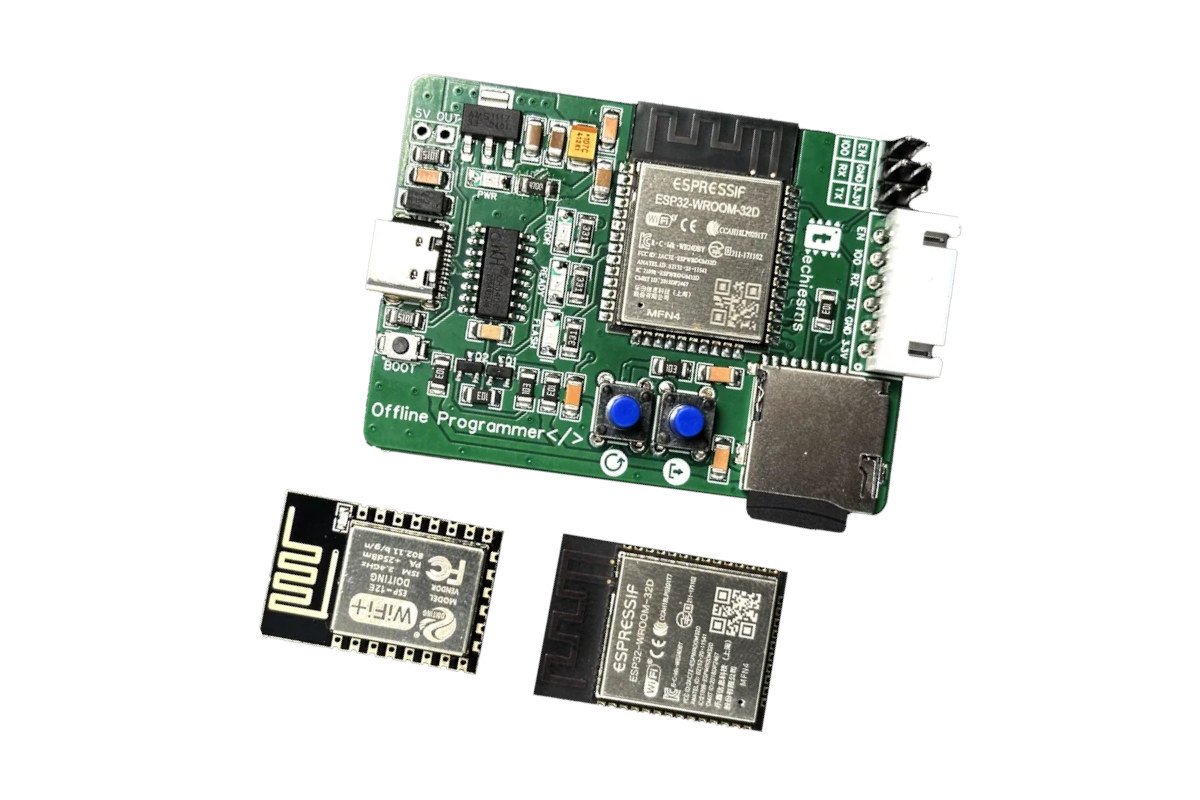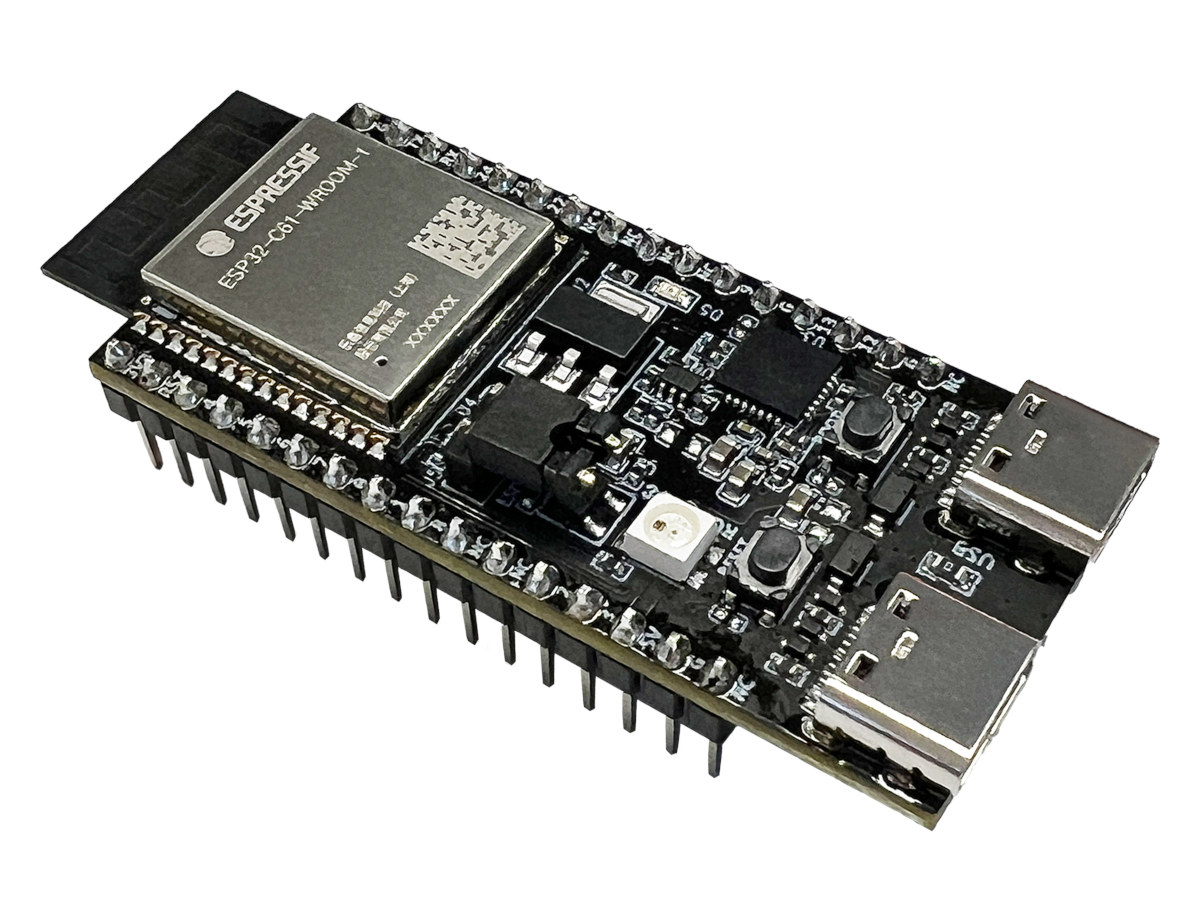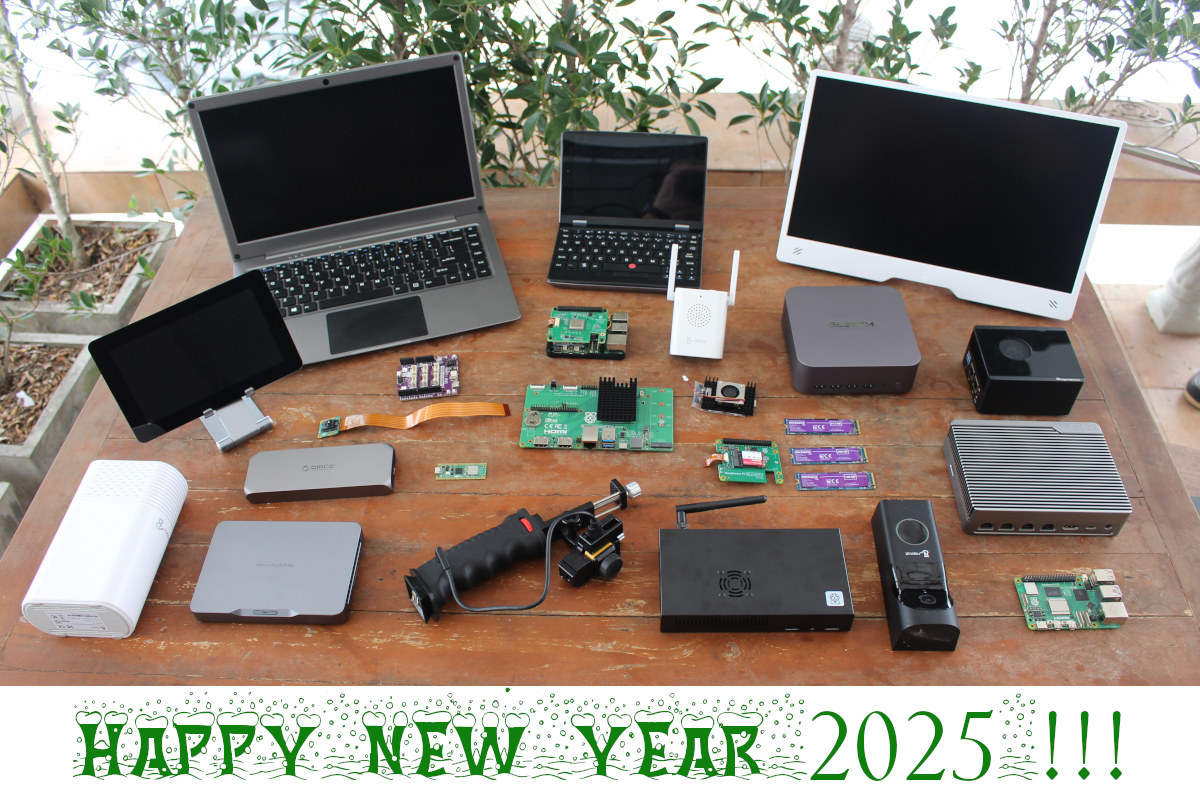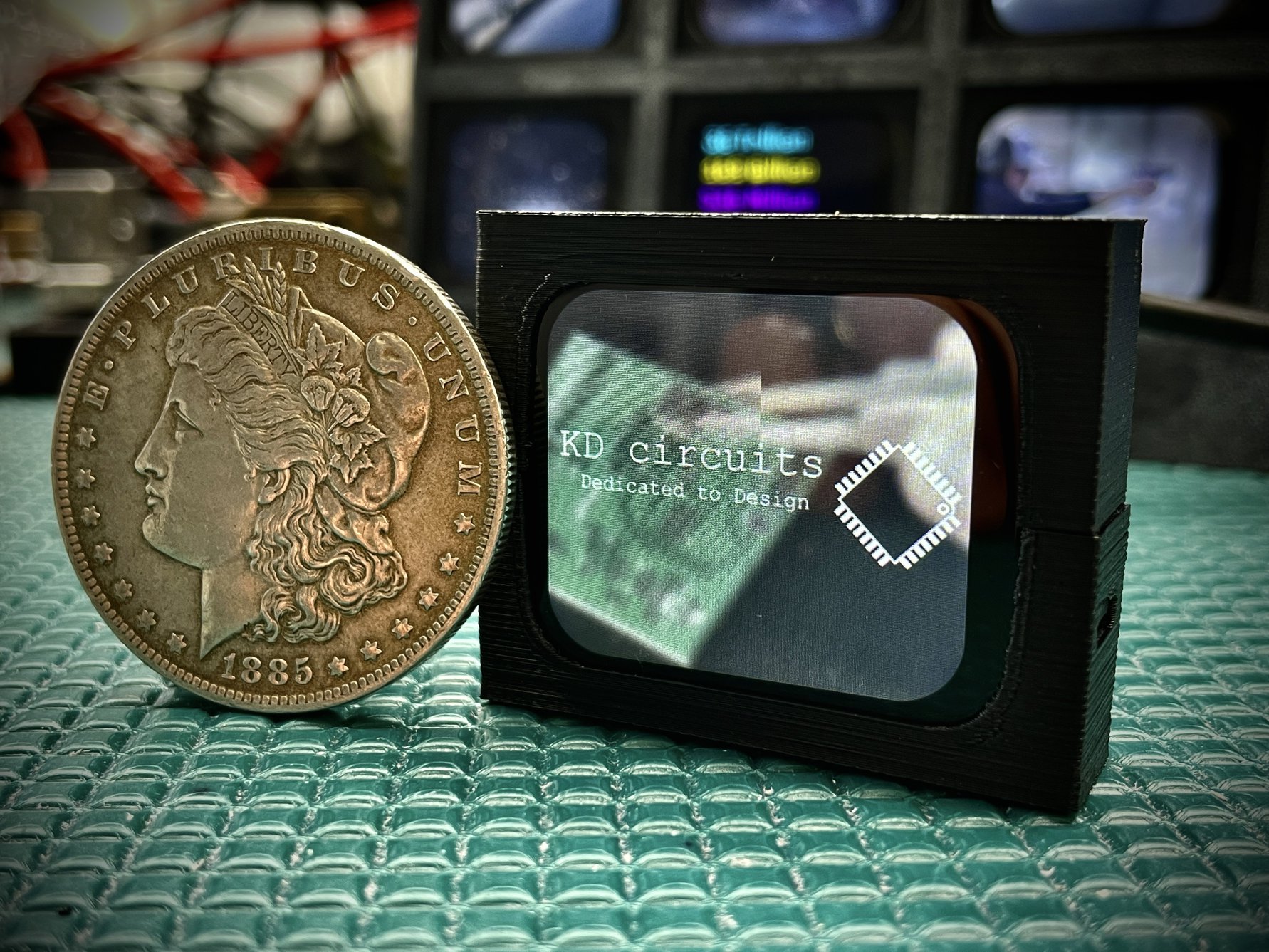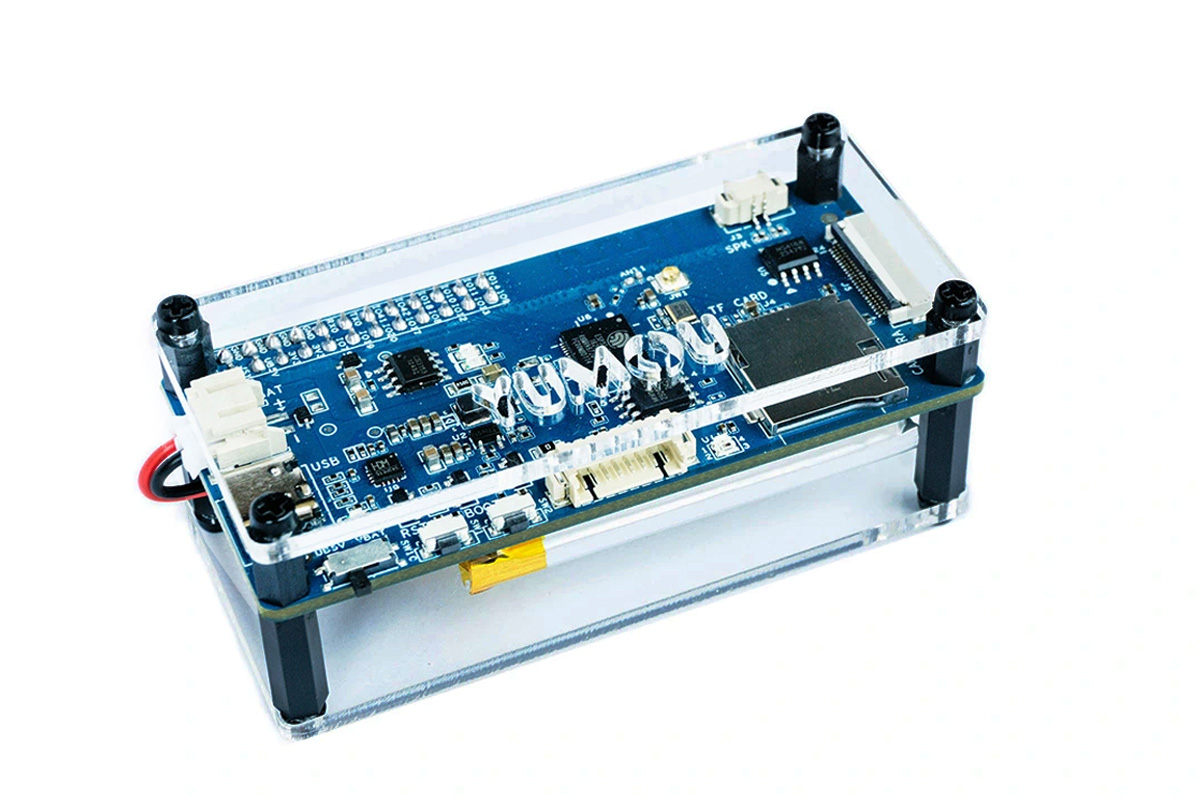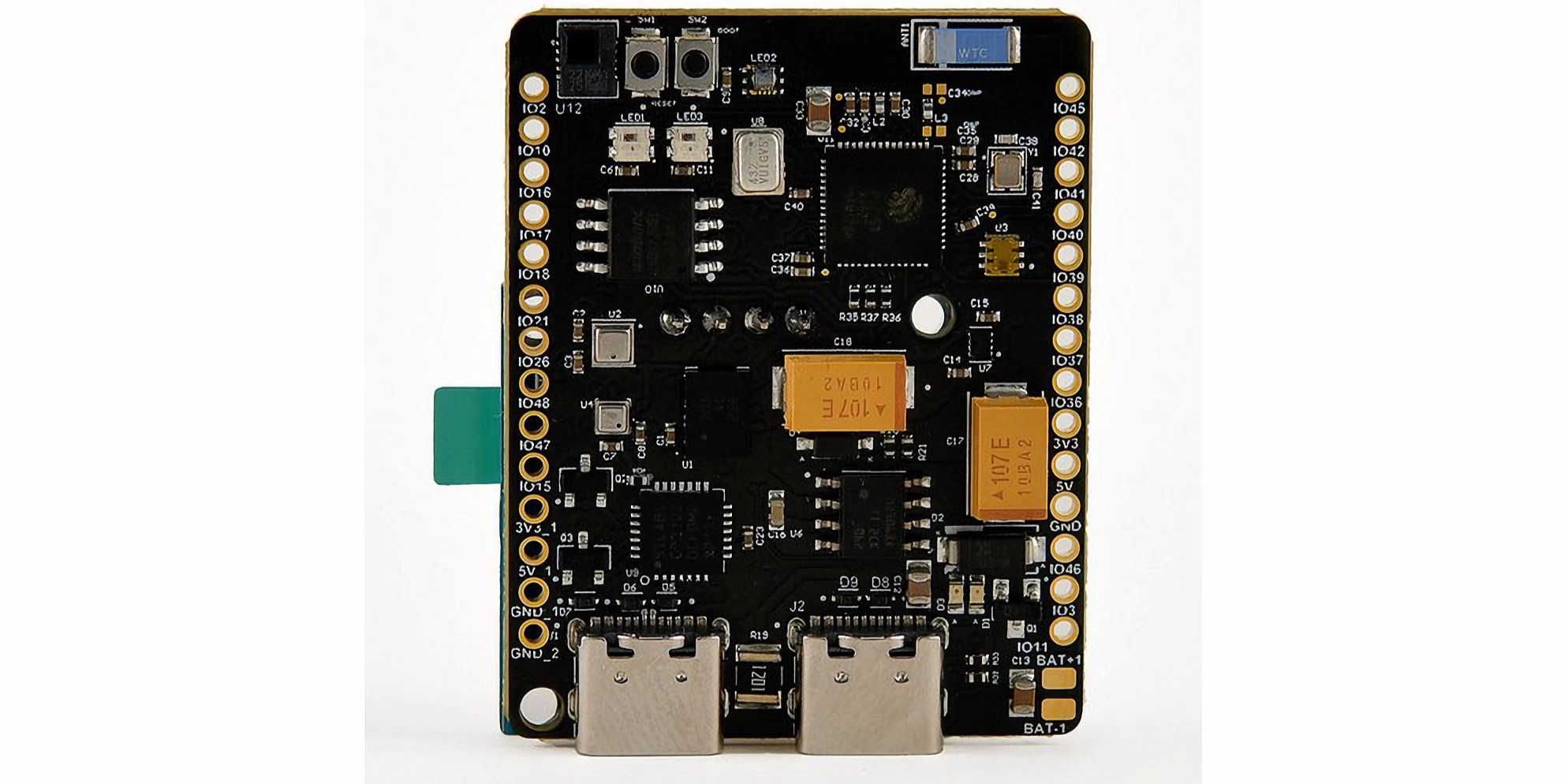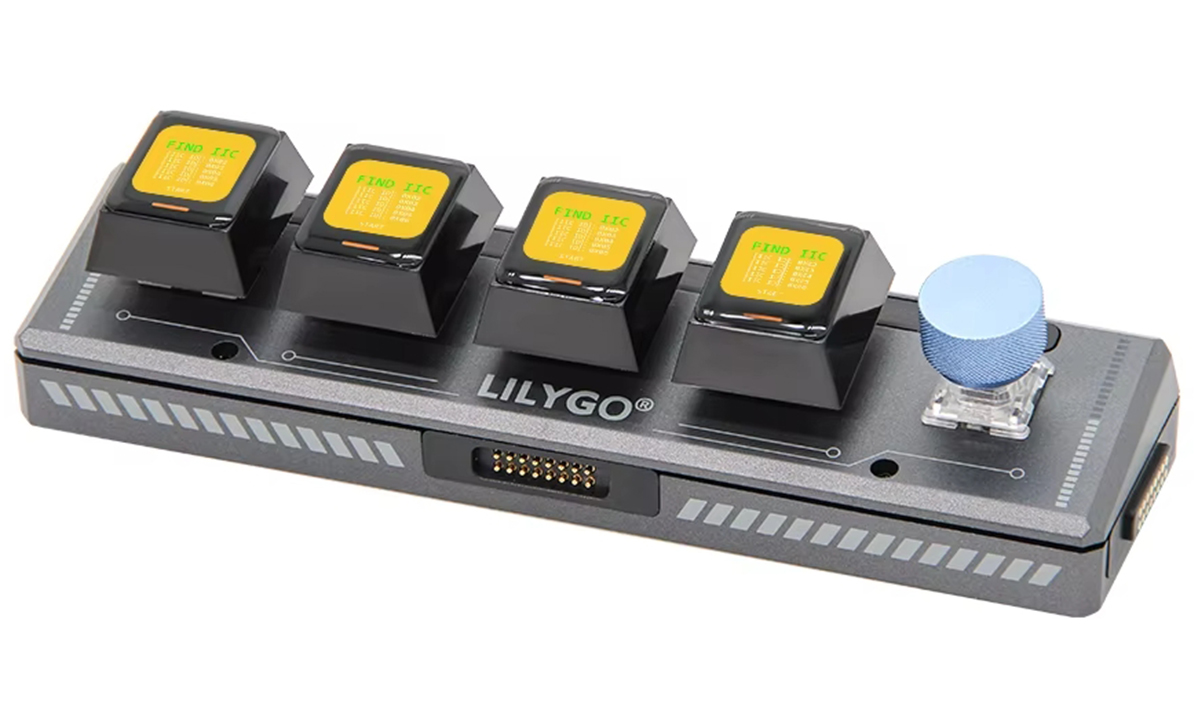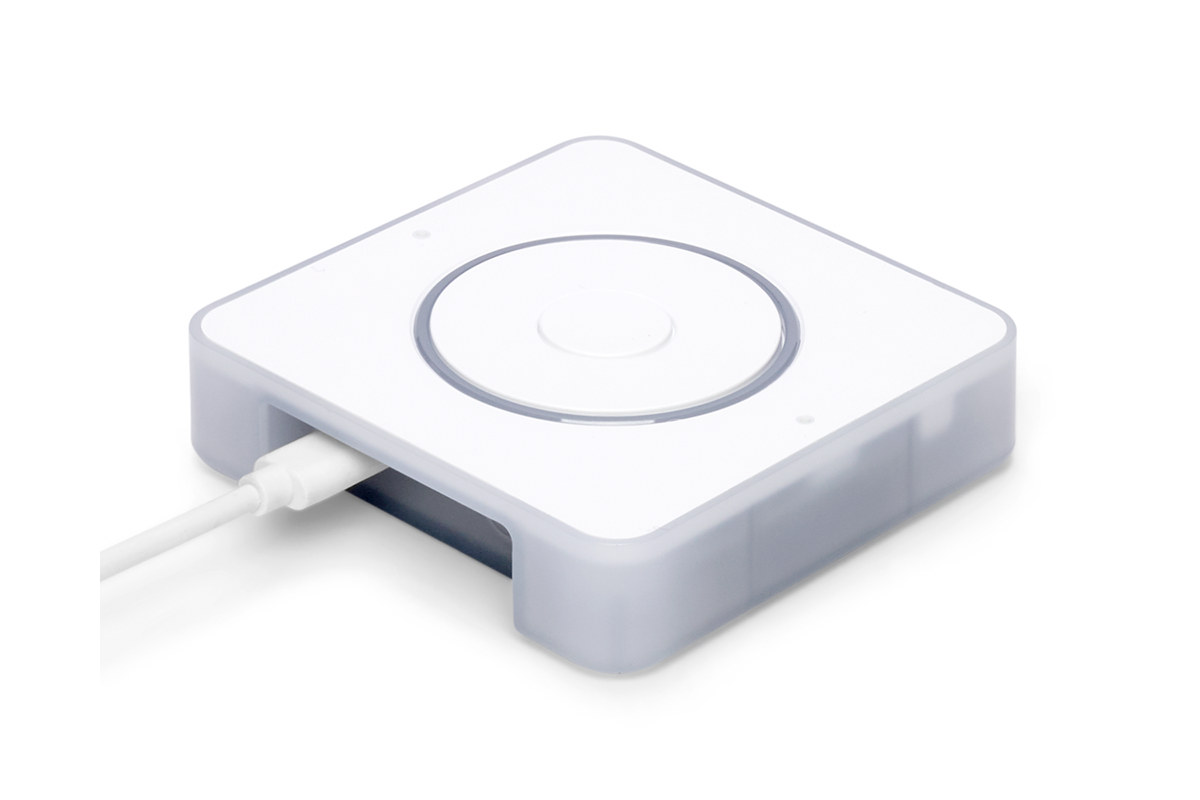The ESP Offline Programmer is an ESP32 board with a microSD card slot designed to flash the firmware to other ESP32 or ESP8266 modules without a PC. You’ll still need one to copy the firmware to a microSD card, but once it’s done you can just insert the microSD card into the board and after wiring is done ideally using a jig, start the flashing sequence with the press of a button. In some ways, it’s the hardware equivalent of the esptool utility and can be useful for remote deployment where carrying a laptop may not always be convenient and potentially for flashing hundreds or thousands of modules using multiple ESP Offline Programmers in a way that’s faster than using computers. ESP Offline Programmer specifications: Wireless module – Espressif Systems ESP32-WROOM-32E ESP32 dual-core Tensilica LX6 microcontroller Storage – 4MB flash Wireless 2.4 GHz WiFi and Bluetooth LE connectivity, built-in PCB […]
ESP32-C61-DevKitC-1 development board features ESP32-C61 low-cost WiFi 6 and Bluetooth LE 5.0 SoC
The ESP32-C61-DevKitC-1 is a development board based on the upcoming ESP32-C61 low-cost WiFi 6 and Bluetooth LE 5.0 SoC that was first unveiled in January 2024, and offered with two USB-C ports, two buttons, an RGB LED, and GPIO headers. In my 2024 year in review report, I noted that Espressif would likely launch the ESP32-C5 dual-band WiFi 6 SoC in 2025, but I completely forgot about the ESP32-C61 which is basically a cost-down version of the ESP32-C6. I’ve now noticed the documentation of the ESP32-C61-DevKitC-1 development board and ESP32-C61-WROOM-1 module is now available, so we have more details about those and the ESP32-C61 itself, so let’s have a closer look. ESP32-C61-DevKitC-1 specifications: Wireless module – ESP32-C61-WROOM-1 SoC – ESP32-C61HR2 CPU – Single 32-bit RISC-V core clocked up to 120MHz Memory – 320KB SRAM, 2MB PSRAM Storage – 256KB ROM Wireless – WiFi 6 and Bluetooth LE 5.0 Storage – […]
CNX Software’s 2024 Year in review, website statistics, and what to expect in 2025
That’s it! 2024 is almost over, and it’s time to reflect on what happened during the year. So I’ll look at the highlights of 2024, share some CNX Software website traffic statistics, and speculate on what may be ahead of us in 2025. Looking back at 2024 Raspberry Pi was super active this year with 22 product launches that included boards and modules like the Raspberry Pi 5 with 2GB RAM, Raspberry Pi Pico 2 and Pico 2 W, Raspberry Pi CM5, expansion modules like the Raspberry Pi AI camera, AI HAT+, and M.2 HAT+, new accessories such as the Raspberry Pi Touch Display 2 and the Raspberry Pi Monitor, and the new Raspberry Pi 500 keyboard PC among others. As usual, there was also plenty of announcement of accessories from third parties, and some boards with the new Raspberry Pi RP2350 Arm/RISC-V microcontroller. There weren’t any ground-breaking Arm processors […]
vPlayer – A 1.69-inch ESP32-S3 touchscreen video display with custom expansion options
The vPlayer is an ESP32-S3 touchscreen video display that can be used for continuous MJPEG video playback from a microSD card. It features a 280 x 240 1.69-inch smartwatch-sized touchscreen display with backlight control and also offers expansion options via JST SH/SR connectors (UART, I2C, and I2S audio), and additional I/O pads on the PCB. All these features also make it suitable for applications such as weather displays, live traffic cameras, computer stats monitors, wildlife cameras, and fetching data from the Internet. vPlayer specifications: SoC – Espressif ESP32-S3 CPU – Dual-core 32-bit microcontroller @ 240MHz Memory and Storage – 4MB Flash and 2MB PSRAM Wireless – WiFi 4, Bluetooth 5.0 Storage – MicroSD card slot via MMC 4-bit interface Display – 1.69-inch touchscreen (280×240) P169H002-CTP TFT LCD ST7789V2 single-chip controller/driver CST816 touch controller Backlight control USB – 1x USB-C for power and data transfer Expansion JST SH/SR 1mm connectors for […]
ESP32-AIVoice-Z01 is an ESP32-S3 AI voice kit with dual microphones, wake word detection, noise reduction and echo cancellation
The ESP32-AIVoice-Z01 is an affordable ESP32-S3-powered AI voice kit designed for creating voice-controlled AI applications. It features Wi-Fi and Bluetooth connectivity through the ESP32-S3 SoC, a dual digital microphone array for accurate voice recognition, and an onboard amplifier. The system also implements audio algorithms for noise reduction and echo cancellation. The ESP32-AIVoice-Z01 board supports Espressif’s WakeNet voice wake-up framework and integrates with the AiLinker open-source backend service framework to enable the connection to various large AI model services like OpenAI, ZhiPu QingYan, TongYi QianWen, and DouBao. These features make this device suitable for developing AI-powered toys, IoT devices, mobile devices, and smart home applications. ESP32-AIVoice-Z01 ESP32 AI voice kit specifications Wireless module – ESP32-S3-WROOM-1U SoC – Espressif Systems ESP32-S3 dual-core Xtensa LX7 processor Memory – 8MB PSRAM Storage – 16MB flash Wireless – WiFi 4 and Bluetooth 5.0 connectivity with external antenna Storage – MicroSD card slot Audio Dual digital microphone array […]
Sensy32 Board is an ESP32-S3 sensor platform with up to six sensors for environmental monitoring in IoT applications
The Sensy32 Board is a compact sensor platform powered by Espressif’s flagship ESP32-S3 WiFi and Bluetooth microcontroller. The development board brings different monitoring devices together on the same PCB for easier integration into IoT ecosystems. It is a multipurpose device with several sensors bundled to measure and monitor ultraviolet light intensity, altitude, pressure, orientation, humidity, temperature, motion, and human presence. It includes a 9-degree-of-freedom inertial measurement unit (IMU) for 3D space orientation, while the built-in MEMS microphone can be used for audio input in voice detection and noise measurement applications. The onboard ESP32-S3 microcontroller powers the array of features and also offers Wi-Fi and Bluetooth Low Energy connectivity. The Sensy32 ESP32-S3 sensor platform also integrates an LCD screen for immediate feedback and real-time monitoring. We have covered other ESP32-based environment sensors such as the Qsen-07 multi-sensor board, AirGradient ONE, MoreSense MS-06, and Studio LUFF’s Air Quality Sensor. Sensy32 specifications: MCU […]
T-Keyboard-S3 Pro 4-Key USB mechanical keyboard adds rotary encoder, support for daisy-chaining up to six keyboards
Last year, we featured the T-Keyboard-S3, a USB mechanical keyboard with ESP32-S3, and four mechanical keys each fitted with a 0.85-inch color display. The upgraded T-Keyboard-S3-Pro adds a rotary encoder and four magnetic interfaces on each side controlked by an STM32G030 MCU to daisy-chain the host keyboard with up to 5 slave keyboards in a 3×2 grid. Previously, we featured the ANAVI Macro Pad 12, Macro Pad 10, and Macro Pad 2 programmable keyboards. Feel free to explore those as well. LILYGO T-Keyboard-S3 Pro specifications: Wireless module – ESP32-S3-WROOM-1 used in the host model only MCU – ESP32-S3R8 dual-core LX7 microprocessor @ up to 240 MHz with Vector extension for machine learning Memory – 8MB PSRAM Storage – 16MB SPI flash Connectivity – WiFi 4 and Bluetooth 5 with LE/Mesh PCB antenna Secondary MCU – STMicro STM32G030F6P6 for I2C magnetic connectors CPU – Arm 32-bit Cortex-M0+ CPU, frequency up to […]
$59 Voice “Preview Edition” adds an offline smart speaker to your Home Assistant server
Nabu Casa has just launched the Home Assistant Voice Preview Edition, a little ESP32 device with an XMOS XU316 audio processor, a dual-microphone array, an internal speaker, and a 3.5mm audio jack, that adds offline smart speaker functions to your Home Assistant server through WiFi. If your Home Assistant server is powerful enough, voice processing will be done directly on your local hardware using Home Assistant Voice software, but with lower-end hardware like a Raspberry Pi 4, audio processing can be done via a privacy-focused cloud instead. The solution also supports expansion thanks to a Grove connector on the bottom of the device. Voice Preview Edition specifications: SoC – Espressif ESP32-S3 dual-core Xtensa LX7 @ up to 240 MHz with vector extension for ML acceleration, 2.4 GHz WiFi & Bluetooth 5.0 LE connectivity Memory- 8 MB octal PSRAM Storage – 16 MB flash Audio DSP/Processor – XMOS XU316 with 16 […]


